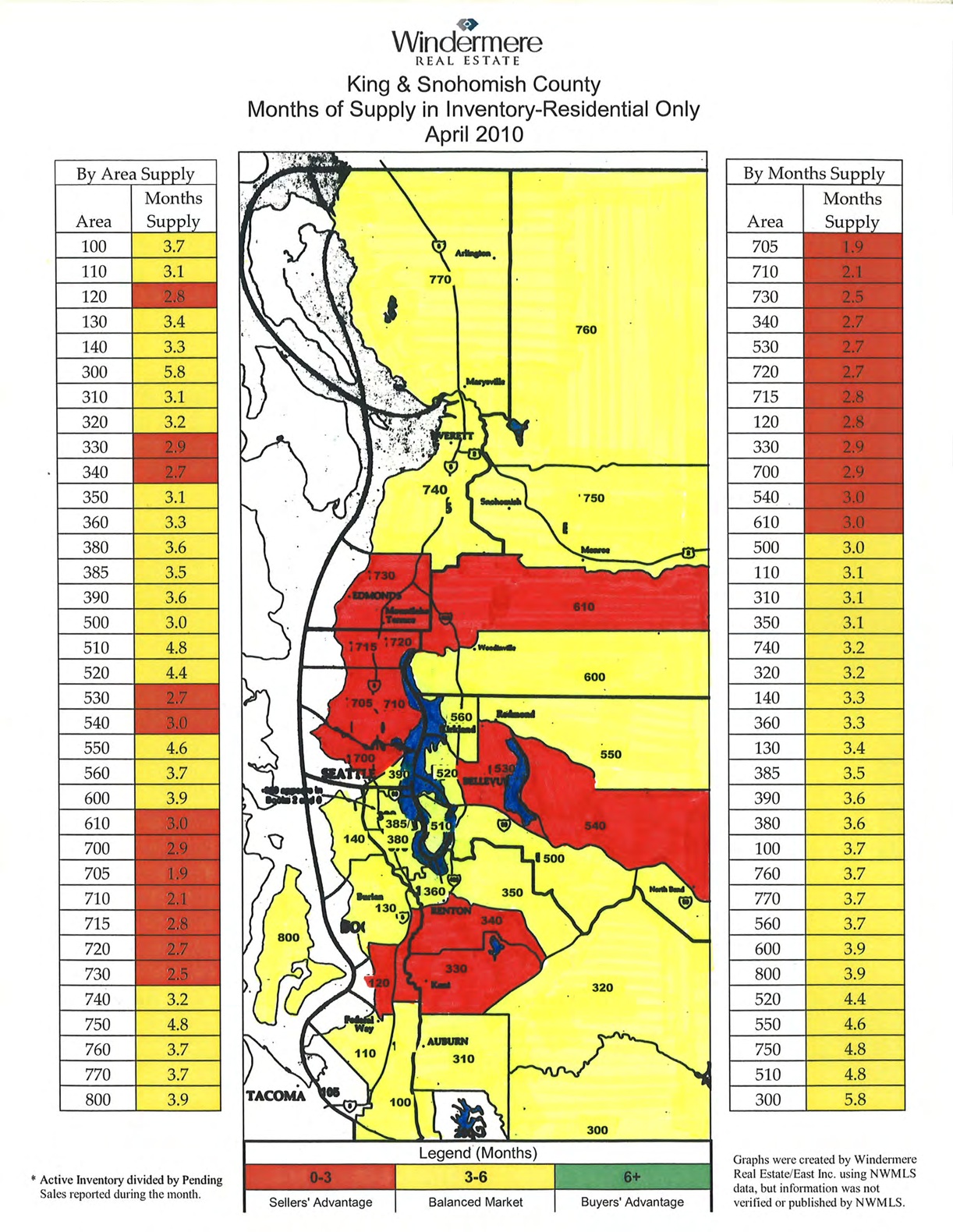[googlemaps http://maps.google.com/maps?source=s_q&hl=en&geocode=&q=Seattle-eastside&sll=47.709762,-122.011414&sspn=0.310487,0.911865&ie=UTF8&split=1&radius=21.22&rq=1&ev=zo&hq=Seattle-eastside&hnear=&ll=47.709762,-122.011414&spn=0.310487,0.911865&t=h&output=embed&w=425&h=350]
How did August, 2009 stack up to August, 2010 in your neighborhood?
(Click on the cities below to see real estate trends for the past 5 years. You’ll find the median pricing for each city and whether the number of homes for sale and the number of sales went up or down. The odds of selling a home in each area is a result of the number of homes for sale divided by the actual number of home sales.)
The plateau: Sammamish, Issaquah, North Bend, and Fall City
The odds of selling a home were 16%.
Median sales price decreased from $515,000 $479,895.
The number of homes for sale increased by 9% and sales were down by 17% from last year.
West Redmond/East Bellevue
The odds of selling a home were 21%.
Median sales price increased to $494,900 from $475,000.
The number of homes for sale were up by 4% and sales were UP by 8%.
South Bellevue/Issaquah
The odds of selling a home were 14%.
Median price increased to $550,000 from $499,500.
The number of homes for sale dropped by 13% and sales were down by 26%.
Woodinville/Bothell/Kenmore/Duvall/North Kirkland
The odds of selling a home were 13%.
Median price was down from $425,000 to $415,000.
The number of homes for sale declined by 2% and sales were down by 27%.
Kirkland
The odds of selling a home were 14%.
Median price increased to $641,000 from $581,919.
The number of homes for sale declined by 13% and sales were down by 27%.
West Bellevue
The odds of selling a home were 6%.
Median pricing was down from $899,475 to $869,000.
The number of homes for sale decreased by 16% and sales decreased by 65%. (Ouch!)
Redmond/Education Hill/ Carnation
The odds of selling a home were 15%
Median pricing increased from $542,250 to $549,950.
The number of homes for sale increased by 12% and sales decreased by 10%.
Real estate sales numbers are down on Seattle’s eastside, with the exception of one area. The East Bellevue and Redmond area near Microsoft showed a slight increase in the number of homes sold. This area was also the only area to show an increase in median price, number of homes on the market (not so good), and number of homes sold. However, median pricing was up in 3 other areas, South Bellevue and Issaquah, Kirkland, and Redmond and Carnation.
The number of homes for sale on Seattle’s eastside is the highest for this year, but should be experiencing a downward swing as we head into fall. Right now, though, there are a lot of choices out there and not as many buyers to compete with. Good buys are out there if you take your time and check out the homes for sale.
What real estate activity have you seen in your neighborhood?
 Facebook
Facebook
 X
X
 Pinterest
Pinterest
 Copy Link
Copy Link






